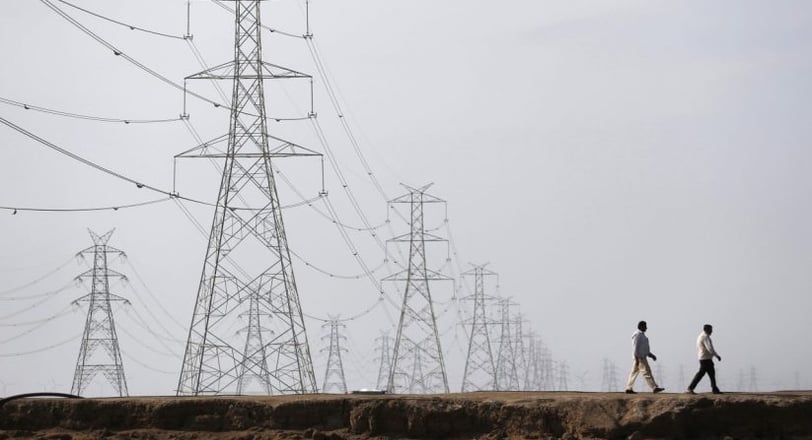Add your promotional text...
Powering India's Future: A ₹9.12 Lakh Crore Plan for Transmission Growth by 2031-32
Synopsis :- India’s power sector is set to undergo a massive transformation with a planned investment of ₹9.12 lakh crore in transmission infrastructure by 2031-32. This ambitious roadmap will enhance grid capacity, integrate renewable energy, and expand cross-border interconnections, paving the way for sustainable growth and energy security.
TOP STORIES
By Vishwas Saxena
11/28/20243 min read


India’s Bold Vision for Power Transmission
The Union Ministry of Power has unveiled an ambitious plan to revolutionize India’s power transmission landscape. With a staggering ₹9.12 lakh crore investment slated for the next decade, this initiative aims to meet the rising energy demands of a growing economy while supporting India’s renewable energy ambitions.
The National Electricity Plan (Transmission) outlines key objectives, including the addition of 1.91 lakh kilometers of transmission lines, 1,274 Giga Volt Ampere (GVA) of transformation capacity at 220 kV and above voltage levels, and the development of 33.25 GW of High Voltage Direct Current (HVDC) bi-pole links by 2031-32.
Expanding Transmission Infrastructure
The power sector’s growth hinges on robust infrastructure. The Ministry’s blueprint includes:
Enhanced Inter-Regional Transmission Capacity
Current capacity: 119 GW.
Planned increase:
143 GW by 2026-27.
168 GW by 2031-32.
Integration of Advanced Technologies
Deployment of state-of-the-art solutions to improve grid efficiency.
Emphasis on automation, digital monitoring, and smart grids to handle the increasing complexity of power networks.
Cross-Border Connectivity
Strengthening interconnections with neighboring countries like Nepal, Bhutan, Myanmar, Bangladesh, and Sri Lanka.
Enhancing energy trade and regional collaboration to ensure stability and mutual growth.
Private Sector Participation
Encouraging investments from Transmission Service Providers (TSPs) and other stakeholders to meet infrastructure demands.
Opportunities for Stakeholders
The Transmission Plan is a strategic document designed to attract various players across the value chain.
Electricity Generators: Clear visibility of transmission infrastructure enables better planning for power generation projects.
Equipment Manufacturers: Increased demand for high-quality components and advanced technology solutions.
Investors: A stable policy environment provides lucrative opportunities in the transmission sector.
Renewable Energy Integration: A Game Changer
India is aggressively expanding its renewable energy portfolio to reduce dependency on fossil fuels. Key milestones include:
Renewable Energy Projects Underway:
1,27,050 MW of capacity under implementation.
89,690 MW in the bidding process.
Hydropower Expansion:
28 hydroelectric projects (HEPs) totaling 13,997.5 MW are under construction.
11 additional HEPs (8,036 MW) and 44 Pumped Storage Projects (60,050 MW) are under survey and investigation.
Coal-Based Energy Complementarity:
29,200 MW of coal-based capacity under construction.
A further 18,400 MW awarded and 47,240 MW under consideration.
Focus on Hydropower and Pumped Storage Projects (PSPs)
Hydropower remains a cornerstone of India’s energy strategy, complemented by PSPs to provide grid stability and address peak load demands.
Current Construction:
28 HEPs totaling 13,997.5 MW.
5 PSPs aggregating to 6,050 MW.
Approved Projects:
Detailed project reports for 28 HEPs (19,460 MW) and 4 PSPs (4,100 MW) have received clearance from the Central Electricity Authority.
Future Prospects:
These initiatives will play a critical role in meeting energy needs while reducing carbon emissions.
Grid Modernization Through HVDC Links
High Voltage Direct Current (HVDC) systems are pivotal to India’s grid modernization efforts.
Planned Development:
33.25 GW of HVDC bi-pole links to ensure seamless power transfer across regions.
Advantages:
Enhanced transmission efficiency over long distances.
Integration of renewable energy sources, minimizing losses and maintaining grid stability.
Regional Connectivity: Strengthening Ties with Neighbors
India’s transmission plan also emphasizes cross-border energy trade, fostering stronger relationships with neighboring countries.
Ongoing Interconnections:
Existing and planned projects with Nepal, Bhutan, Myanmar, Bangladesh, and Sri Lanka.
Benefits:
Improved energy security for all parties.
Regional economic integration through mutual energy dependence.
The Role of Coal in Energy Transition
While renewable energy is the focus, coal-based power will remain critical for baseload generation.
Capacity Under Construction:
29,200 MW of new coal-based plants to support peak demand.
Long-Term Strategy:
Balancing coal and renewables to ensure energy reliability during the transition period.
Policy Support and Implementation
The government’s commitment to transforming the power sector is evident through well-defined policies and strategic initiatives.
National Electricity Plan (Transmission):
Comprehensive roadmap addressing current and future energy challenges.
Central Electricity Authority’s Role:
Approving project proposals and ensuring adherence to quality standards.
Focus on Innovation:
Encouraging research and development in energy storage, grid management, and advanced transmission technologies.
Challenges and Mitigation Strategies
The ambitious plan faces several challenges, including:
Funding Requirements: Attracting private investments and ensuring timely financial support.
Technological Gaps: Adopting cutting-edge solutions to meet infrastructure demands.
Coordination Issues: Streamlining efforts between central and state governments, as well as private players.
To address these challenges, the government is fostering collaboration, introducing regulatory reforms, and incentivizing innovation.
